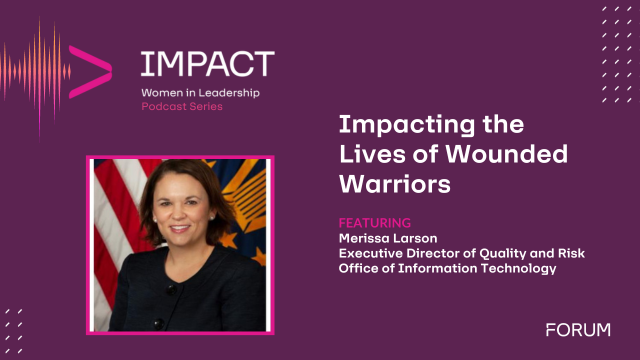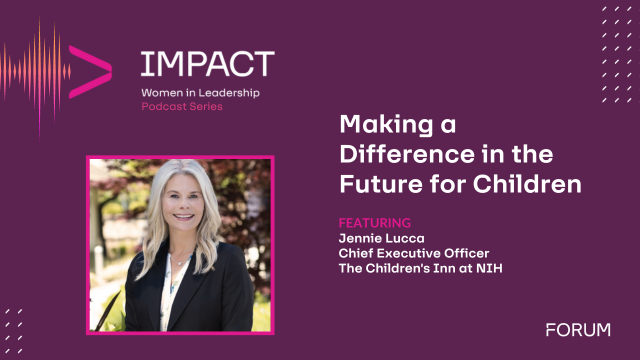In this month’s article, Mike Farahbakhshian conjures up things spookier than ghosts and goblins: What’s to come in FY20 and beyond in the world of Health IT. And what do vaping and Batman have to do with all of this? Suggested drink: Pumpkin Spice Margarita.
Happy October, Meaningless Useketeers! With Fiscal New Year behind us, we now turn our attention to more pressing issues: Halloween! As we think about spooky, scary ghosts and goblins, I’ll present you with a few Halloween-inspired thoughts on where Health IT is going in FY20 and beyond.
Those of delicate constitutions, beware! Beyond this point lie unspeakable horrors…
Horror #1: Tech Bro Batman: Medical Devices

[Author’s note: I promise, by the end of this section, I am going to say something good about Medtronic. Scout’s honor.]
Superhero costumes are a perennial Halloween favorite. So, Useketeers, riddle me this: How are medical devices like Batman?
You may think the answer is that they solve crimes. But the real answer is: They’ve been ruined by tech bros. Tech bros ruin everything.
Batman operates like a tech bro. He prioritizes the sensational over the effective. A billionaire like Bruce Wayne could effectively stop crime in Gotham by using boring, data driven, methodical best practices. These include putting his fortune and fame into social programs, preventative mental health care, education and outreach, as well as funding research. Maybe he would run for office and create sensible public policy. But that’s not an interesting story, and instead the Wayne fortune is dedicated to flashy bat-themed technology and punching criminals in the face.

But let’s say Bruce Wayne is doing those things and that ordinary crime in Gotham City is nil. You’ll still have supervillains that no amount of sensible public policy can fix. Even so, Batman still isn’t effective because he keeps fighting the same adversaries over and over. An effective Batman would eventually realize that his current solution of Arkham Asylum is a security nightmare. He’d make a data-driven decision. A more permanent solution is required. Maybe it means realizing more lives are saved if he kills the supervillain. Maybe it just means borrowing Superman’s Phantom Zone. The point is, Batman never alters his tactics, to the point where you wonder what the hell he’s getting done at all.
 The problem is money. Comic books need to sell. There’s no money in promoting a story where incremental, sensible public policy solutions build on success. There is a lot of money to be made in telling the story of a billionaire who puts his money into gadgets and showmanship. Stories need to hook repeat readers, and that means rehashing old adventures and bringing back familiar adversaries over the novel.
The problem is money. Comic books need to sell. There’s no money in promoting a story where incremental, sensible public policy solutions build on success. There is a lot of money to be made in telling the story of a billionaire who puts his money into gadgets and showmanship. Stories need to hook repeat readers, and that means rehashing old adventures and bringing back familiar adversaries over the novel.
Now let’s add late stage capitalism to the mix. For the first time in history, we have techbro billionaires who believe their own Bruce Wayne bullshit. Much like Batman, they keep fighting the same villains over and over. This is how Silicon Valley tech-bros tend to keep reinventing publicly regulated concepts such as the bus. Except, of course without regulatory protections, with forced arbitration, and no respect for collective labor. Even academia is in bed with these would-be Bruce Waynes. An example is when the MIT Media Lab, which does God knows what, willingly courted the money of Jeffrey Epstein. One result was reinventing the simple concept of the hydroponic growth chamber. This shitty reboot has a flashy, Batman-esque name: the “Food Computer.” Except, of course, the Food Computer … doesn’t work. I am going to repeat this, because it bears repeating: MIT took a good chunk of money from a convicted sex offender who fancied himself Bruce Wayne, and the result was a sham that did not work. I’m amazed they could get so much interest with so little actual promised (you can grow a plant!) and yet not actually accomplish it (they couldn’t grow a plant.)
Naturally the techbro batmen are targeting medical devices. Some of this innovation is bona fide amazing. For example, Medtronic recently partnered with Tidepool and Dexcom to create a Bluetooth-enabled insulin pump that works with Tidepool Loop. This means that diabetics can now pick and choose their hardware and software to create a complete artificial pancreas based on FDA processes and open source stacks. The concept of the open source artificial pancreas is an amazing breakthrough in diabetes treatment and I commend Medtronic for taking a positive step forward.
(I told you I’d say something nice about Medtronic.)
 But for every good advance in medical device technology, there’s some Bruce Wayne techbro wannabe with a bunch of crackpot ideas. From the last link, Zachary Rapp is “co-founder of digital health start-up PhenoMx; CEO of SigmaGenetics, manufacturer of a device that uses magnetic fields to deliver DNA into cells; and the head of business development at medical device maker Altoida.” Since Sigma Genetics is a dead link, let’s put aside the psychoceramics of … using magnets to deliver DNA.
But for every good advance in medical device technology, there’s some Bruce Wayne techbro wannabe with a bunch of crackpot ideas. From the last link, Zachary Rapp is “co-founder of digital health start-up PhenoMx; CEO of SigmaGenetics, manufacturer of a device that uses magnetic fields to deliver DNA into cells; and the head of business development at medical device maker Altoida.” Since Sigma Genetics is a dead link, let’s put aside the psychoceramics of … using magnets to deliver DNA.

Altoida is a bona fide Class II medical device that is intended “to screen and monitor cognitive outcomes.” The science seems tenuous at best, but they keep raising money. I don’t know enough about Altoida or its purported science to judge, but this isn’t passing my sniff test and the website seems like someone threw buzzwords (AI! ML! Genetic markers!) at a wall and see what stuck.
I predict FY20 and beyond will be full of medical device snake oil like this. Remember, Theranos was classified as a medical device. Theranos is the result of people following Batman logic.
In a world of incompetent Batmen, the Federal Health IT community needs to be the Gotham P.D., cleaning up the aftermath. Be the hero the Federal Health IT community needs, even if it’s not the one it deserves.
FY20 TAKEAWAY: Monitor developments in medical devices, but only ones based on hard science and incremental success. If it sounds too good to be true, it is. Don’t be taken in by hype.
Horror #2: Ghosts Rattling Supply Chains: DIY and Adulterated Pharmaceuticals
[Author’s note: I promise, by the end of this section, I am going to say something good about blockchain. Scout’s honor.]
As I mentioned before, I’m a fan of what Medtronic is doing to create an open architecture for insulin pumps, and I am not a fan of techbros reinventing the wheel as an unregulated app. You can understand that I am somewhat on the fence about the Open Insulin Project.
We have a problem with the price of lifesaving insulin. Diabetes is the most expensive chronic illness in the United States, reaching $327 billion a year in Healthcare costs. A full $15 billion of that is cost of insulin. The cost of insulin has increased nearly 1400% between 1996 and today. The best solution to this conundrum is better insurance coverage, better regulation, and better Type II diabetes prevention by encouraging healthy diets and exercise. A not-so great solution is to encourage more pork consumption (insulin can be made from pigs), but who wants to treat Healthcare like the McRib?
The worst solution, in my opinion, is for techbro “biohackers” to encourage synthesizing their own insulin using yeast and sugar. Oh brother. What kind of dire straits are we in that we are treating lifesaving insulin like prison wine or bathtub gin?
In theory, if you have a clean enough lab, I have no issue with creating your own insulin, but look at what is happening with vape juice right now – in legal and regulated markets. Cannabis vape juice, not even the good stuff, but completely non-psychoactive CBD vapes, are being spiked with dangerous synthetic cannibanoids such as K2 and Spice. Instead of propylene glycol, dangerous Vitamin E Acetate is being used as a cheaper and deadlier solvent. In many cases, the adulterated vapes don’t even have any of their active ingredient. These are in regulated markets where it’s legal!
 Adulterations in the supply chain can kill. Remember Halloween panics about razor blades in apples and candy? Remember in 2008 when there was melamine in Chinese milk supplies? Now imagine adulteration of pharmaceuticals with extremely low lethal doses, like synthetic opioids. Opioids are getting stronger than ever, by orders of magnitude.
Adulterations in the supply chain can kill. Remember Halloween panics about razor blades in apples and candy? Remember in 2008 when there was melamine in Chinese milk supplies? Now imagine adulteration of pharmaceuticals with extremely low lethal doses, like synthetic opioids. Opioids are getting stronger than ever, by orders of magnitude.
Imagine if someone wants to cut fentanyl with carfentanyl and gets the potency wrong. There’s a big incentive to cut corners to save money. This is because there is a calculus to drug fatalities and it is in every tycoon’s interest to roll the dice. Remember Jack the Narrator’s comment about automotive recalls in Fight Club?

This same calculus applies to big Pharma, especially when the supply chain comes from overseas chemical manufacturers that are many levels removed from the liability of the pharmaceutical firm. The supplier can point fingers at the distributor. The distributor can point fingers at the quality testers. The quality testers can point fingers at the supplier. Even when there’s a settlement, such as for Purdue Pharma, it’s just a Chapter 11 reorganization. We cannot rely on post facto solutions to the opioid crisis nor should we for adulterated pharmaceuticals.
Instead, the Federal Health IT Community needs to focus on pharmacovigilance and supply chain management technologies. This is one of the very few areas where blockchain is actually a good idea.
(I told you I’d say something good about blockchain.)
Blockchain can and should be used in conjunction with IoT for tracking provenance and automating results of testing. This will help stop the problem with counterfeiting, adulteration and corner-cutting that we have seen so far with vapes. The FDA is currently piloting blockchain methods to support pharmacy supply chain provenance and verification under the Drug Supply Chain Security Act. In FY20 and beyond, the Federal Health IT community must rise to support it.
FY20 TAKEAWAY: Supply chain provenance will be critical in pharmaceuticals. This is an area where blockchain can make a difference. As drugs become more potent, the effect of cutting corners will kill more people. Don’t let that happen.
Horror #3: Night of the Living Boomers: Medicare Reform
Part of the reason we need to ensure clean pharmaceuticals is because we go through so many of them as we age. And boy, are we aging. By 2035, there will be more adults aged 65+ than children in America. The number of Americans 65+ is expected to double by 2060.
This “graying of America” is complex. In many ways, it is the result of our advances in Healthcare. Better outcomes mean longer lifespans. Better preventive care means fewer preventable deaths. Better prenatal and neonatal care means lower child mortality. While economics is the major factor in the decline of birth rate, advances in birth control are a contributing factor.

There are negative effects as well. We are rapidly becoming a gerontocracy and it’s showing. We are feeling the effects of this gerontocracy in our economy, politics and culture wars. We’re in an election year where the incumbent and the top three contenders are septuagenarian. But I already wasted my social commentary points bitching about Batman. So instead, I’ll talk about what this means for the Federal Health IT community.
Compared to Veterans Affairs or the Defense Health Agency, the Centers for Medicare and Medicaid Support (CMS) are very difficult to break into as a market. A CMS expert explained this to me in relatable terms that even I was able understand. While many people know military Service Members and Veterans, everyone knows someone eligible for Medicare. Each of us, if we live long enough, will be Medicare eligible. Consequently, while many Americans have a stake in defense or Veterans health, every American has a stake in Medicare.
Anything involving Medicare is highly visible, from Congressional committees down. CMS must be extremely conservative in its procurement, because any break in service will make the evening news and Congressional hearings. Doubly so after the bumpy healthcare.gov launch.
FY20 marks the 2020 election season in full swing and expansion of Medicare coverage will be a major debate point. This goes beyond Medicare for All. Should Medicare expansion come to pass, it will become even more visible and scrutinized. What this means for the Federal Health IT community is an even more insular CMS and higher barriers to entry. This will affect the growth strategy and forecasting of countless vendors in the Federal Health IT community.
FY20 TAKEAWAY: Pay attention to what’s happening in politics and demographics. It may behoove you to look into lobbyists. Consider work at the state exchange level, even if state and local work is too small potatoes for you. Once the gates close, you may be shut out forever.
If the Costume Fits…
October is known for frights and the world of health has never been scarier. But forearmed with the knowledge you’ve gained here, you just may have what it takes to fight the ghosts, goblins, and bugaboos that plague the Federal health IT landscape. Stay safe out there, and in the spirit of Halloween, here’s a little something to play at your Halloween party:












